Country
Profiles
Country
Networks
Country
Associations
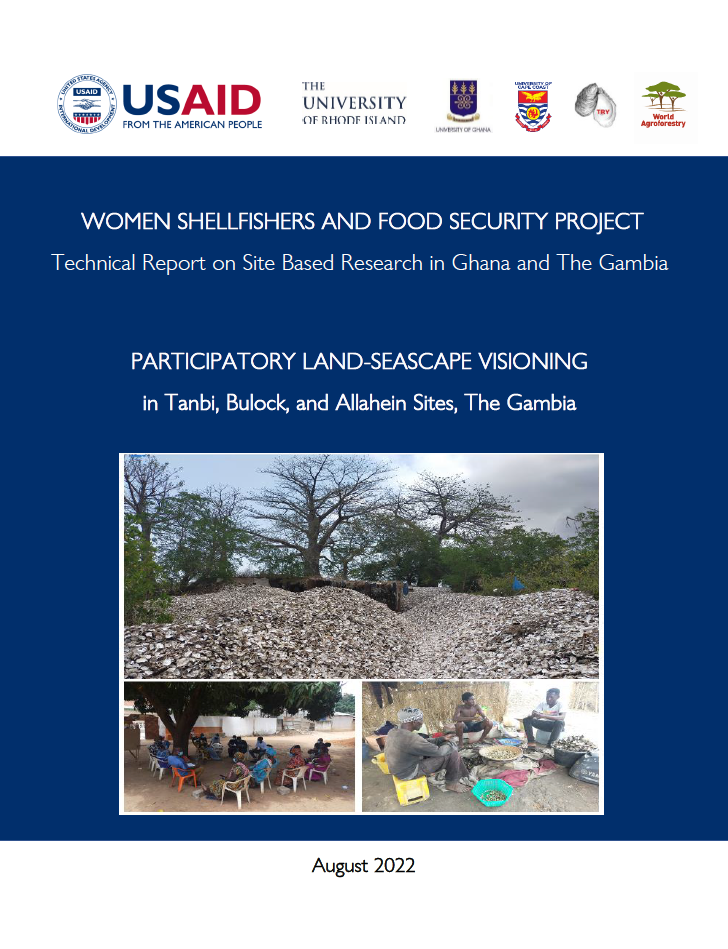
Landscape Visioning in Tanbi, Bulock, and Allahein Sites, The Gambia
In The Gambia, communities are highly dependent on their natural resources for survival, contributing to their degradation. A holistic approach is required for communities to look back at how these systems have changed, their status, and envisaged future. In The Gambia, a participatory visioning process was conducted through an approach that conducted 15 focus group discussions in eight communities spread over three sites (Tanbi, Allahein and Bulock). The objective was to build consensus and develop a common land-seascape vision for shellfishing communities towards better ecosystem management.
The study established that farming, fishing, and shell fisheries are the main livelihood activities, with men focusing more on labor-intensive and women on less labor-intensive activities. Activities such as farming and fish harvesting varied in different months across the year. Trend analysis revealed that activities are either expanding, not changing or declining in the studied sites based on underlying reasons such as weather conditions, migration trends, harvesting trends, and regulations. Mangroves were perceived to be expanding due to initiatives by different stakeholders to promote shellfisheries. Generally, the communities observed declining production of food, feed and fiber in the past and envisaged an improvement in the future to meet the growing demands by the community. To achieve that, it is necessary to continue promoting current interventions such as mangrove restoration and rehabilitation of degraded sites for sustainable ecosystem services generation in the future.
The visioning process identified activities such as deforestation and overharvesting of fish resources that need urgent attention. Activities such as mangrove-replanting, increased regulations enforcement, introduction of sustainable fish harvesting and rotational cropping were on the other hand highlighted to aid restoration efforts. This study therefore helped identify pathways for addressing deforestation of mangroves and terrestrial forests, overharvesting of fish resources, and challenges related to land management, for instance by working with key enablers such as extension services, and increased partnership and collaboration with product or market actors.
on Aug 2022
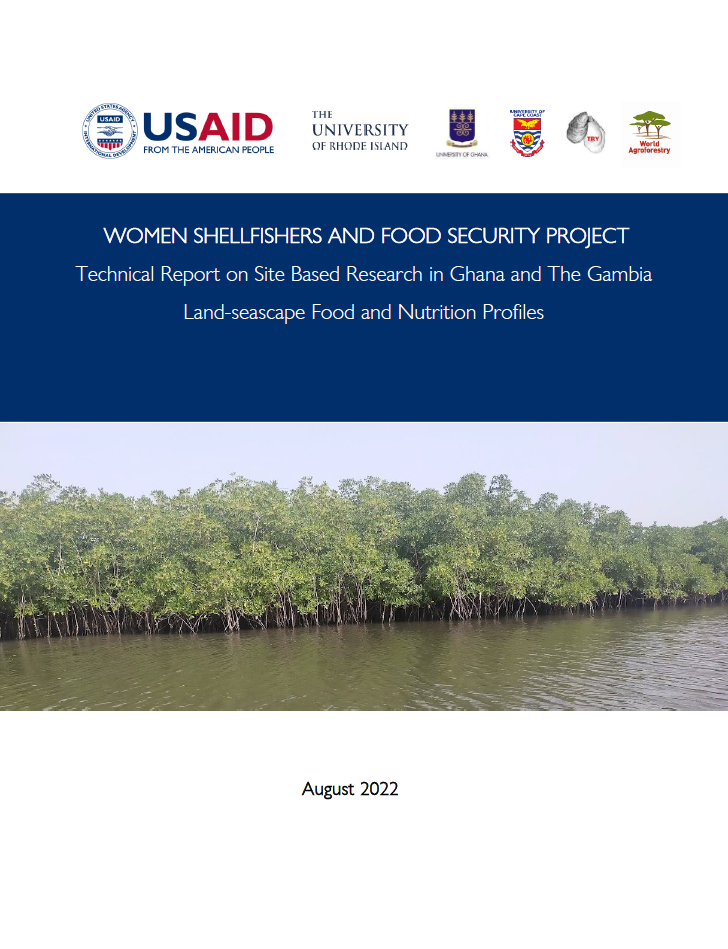
Technical Report on Site Based Research in Ghana and The GambiaLand-seascape Food and Nutrition Profiles
Diversified food system strategies can improve food composition and income sources for women oyster harvesting communities dependent on seasonal fishery activities. This study focused on women shellfishers in Densu Estuary, Narkwa Lagoon, and Whin Estuary in Ghana and in Tanbi, Bulock, and Allahein estuaries in The Gambia, and to understand the status and opportunities for increasing the use of biodiversity to meet seasonal food and dietary needs.
Research activities included site scoping assessments, 21 focus group discussions in Ghana (5) and The Gambia (16) and 356 random household interviews in Ghana (211) and The Gambia (145). In addition, data validation and feedback discussion meetings were conducted with communities across the six study sites. Overall, assembled data covered household livelihood characteristics, food production, food types, seasonality and expenditure attributes, tree planting, nurseries, species diversity and management, local food portfolios, and oyster and fisheries resource use challenges.
Findings revealed key challenges cited as hindrances to meeting environmental and dietary needs by communities. There are food seasonality challenges, narrow food choice options, and inadequate credit facilities, market infrastructure, knowledge, and local capacity limiting fisheries activities. Data analysis revealed that communities are reliant on starchy staple crops, pulses, vegetables, and fruits for nutrition. Immediate nutrition food portfolios developed together with communities showed tree and crop species and their possible contribution for food and nutritional needs from local production systems. April and July were mapped as peak for food insecurity in Ghana, while in The Gambia peak food insecurity was between June and September. The study therefore recommends establishment of a more diversified food system that includes trees to improve diets and income, and contextualisation of the community needs across the sites based on their locally available biodiversity resources.
on Aug 2022
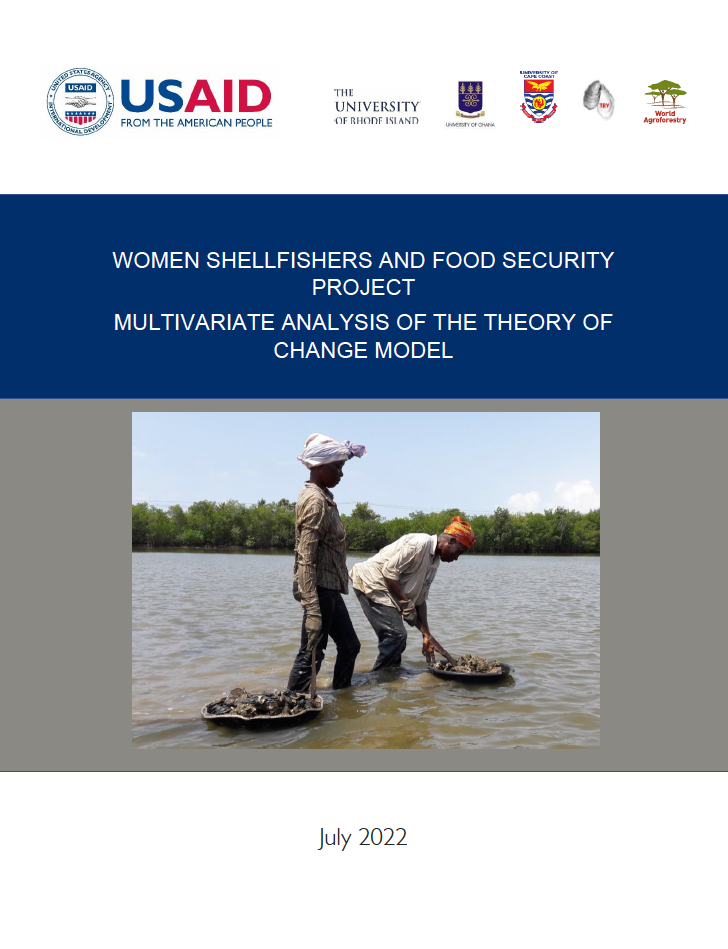
Multivariate Analysis of the Theory of Change Model
This report is a summary of a multivariate analysis of the theory of change model of the USAID Women Shellfishers and Food Security Project, funded by The United States Agency for International Development (USAID) and implemented by the University of Rhode Island (URI) and several partners from West Africa – the University of Cape Coast (UCC) in Ghana, the University of Ghana (UG), TRY Oyster Women’s Association (TRY) in The Gambia and, World Agroforestry (ICRAF). This project seeks to address the need for greater attention to food security for women shellfishers and their families while improving biodiversity conservation of the mangrove and estuarine ecosystems on which their livelihoods depend.
on Jul 2022
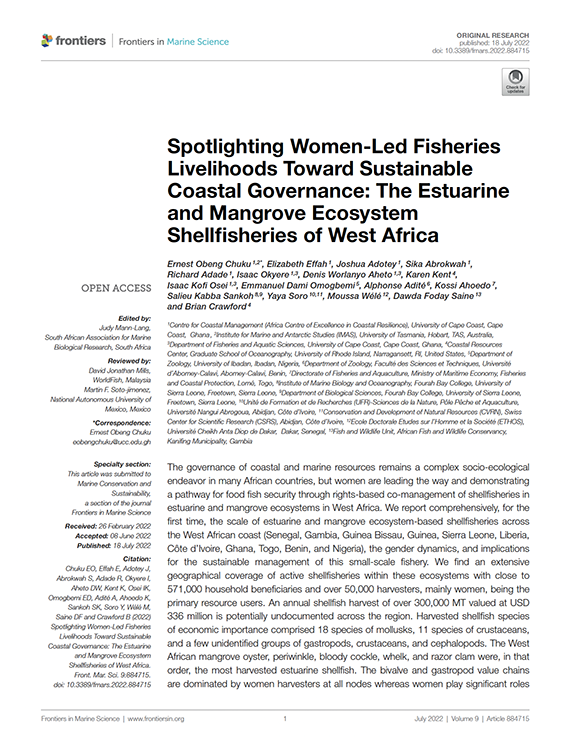
Spotlighting Women-Led Fisheries Livelihoods Toward Sustainable Coastal Governance: The Estuarine and Mangrove Ecosystem Shellfisheries of West Africa
on Jul 2022
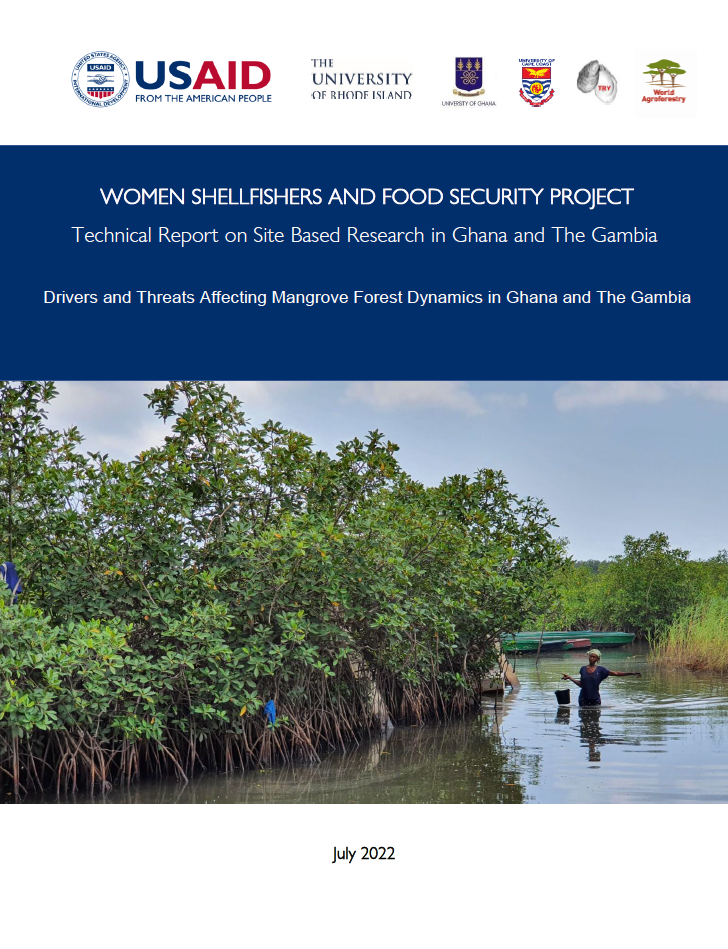
Drivers and Threats Affecting Mangrove Forest Dynamics in Ghana and The Gambia
Mangroves are one of the most important vegetation types in coastal areas. They provide numerous ecosystem services, including wood, edible products (fish, oyster, etc.), coastal area stabilization, and many more. However, despite such immense contributions, mangrove forests are being converted into other land uses that seem more attractive economically in Ghana and The Gambia. In other cases, the vegetation is degraded due to the increased extraction and pollution from waste dumping. This report examines the main drivers and pressures that affect the spatial dynamics of this vital resource. Propositions on how to respond to or mitigate these pressures are also provided. This study used the DPSIR (Drivers-Pressures-State-Impacts-Responses) analytical framework and situation modeling proposed by USAID. Four critical drivers and threats were identified: population dynamics, economic activities, natural factors, and sporadic seasonal drivers. For each of these drivers, the main threats they exert on the mangroves are discussed using the community perspectives as the basis. Response options such as policy, practices, governance, and behavioral responses were identified. Practical pathways to implement these responses include developing management plans, adopt a mangrove approach, promoting participatory designed co-management models, devising incentive schemes (e.g., Payment for ecosystem services, etc.), and awareness creation. A sample action plan for restoring and conserving mangroves is provided for practitioners to adapt the plan to their contexts.
on Jul 2022
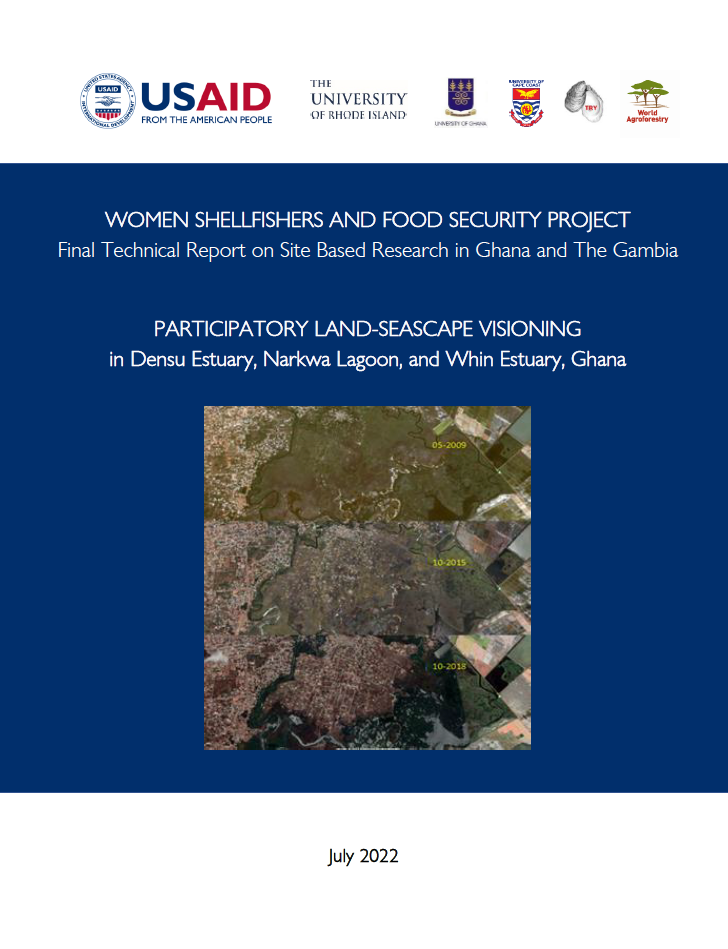
Participatory Landscape Visioning in Densu Estuary, Narkwa Lagoon, and Whin Estuary, Ghana
Ghana is endowed with coastal water bodies that support fishing and fish-related enterprises to support livelihoods. The country has lost a net of 539 square kilometers of mangroves in the past two decades, necessitating an integrated approach to support ecosystems and livelihood functioning. A visioning approach was employed to engage the communities in Densu Estuary, Narkwa Lagoon, and Whin Estuary in Ghana to understand the changes, the current situation, and to identify desired future scenarios in the land-seascape. It involved 115 shellfishers (93 percent and 7 percent females and males respectively). The study suggested that shellfishers are engaged in different secondary livelihood activities, including trade, farming, and livestock keeping, with gender playing a role in activities selection. The general trend in different livelihood activities was degrading and declining productivity over the years and the hope for increased productivity in the future. Natural drivers such as changing temperature and rainfall patterns and human drivers such as crop production, infrastructural development, population growth, overharvesting of fish resources, and pollution, were cited by the communities as being behind degradation patterns. The visioning process identified different activities or practices that the communities want to: 1) stop from happening (e.g., pollution, light fishing, overfishing, etc.), 2) expand or promote (e.g., mangrove restoration), and 3) new activities they want to introduce (e.g., alternative livelihood options and market linkages). Stakeholder organizations and their responsibilities were identified, falling broadly under government, Non- Governmental Organizations (NGO), community, and private sector typologies. Community perceptions on the state of mangrove forests and their relationship to shellfishing activities was documented. Discussion of findings highlight the need for regulatory measures to be implemented in these community land-seascapes and for empowering local resource governance systems through deployment of co-management schemes, contextualized to the local realities.
on Jul 2022
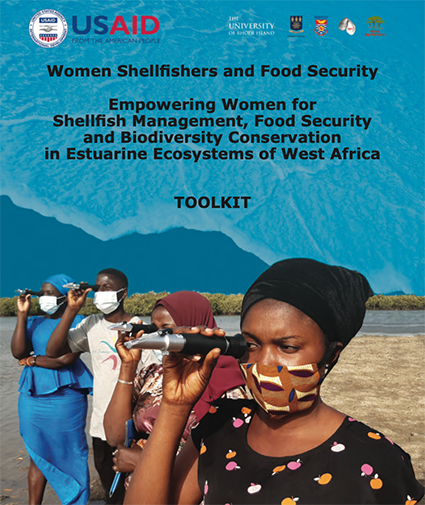
Empowering Women for Shellfish Management, Food Security and Biodiversity Conservation in Estuarine Ecosystems of West Africa [ENGLISH]
This toolkit responds to an urgent need to facilitate locally driven and locally based livelihoods that enhance rather than degrade natural resources management, benefit women, and engage them in decision making. Coastal estuarine and mangrove areas of West Africa are endowed with a rich biodiversity that serves various ecosystem functions. These include climate change adaptation and mitigation, as well as food security, via the harvest of many estuarine species. Shellfish species comprise a significant portion of the food resources harvested from these ecosystems. As a result, the livelihoods of many coastal inhabitants, particularly women, are closely associated with these systems. Bivalve shellfisheries, primarily cockles and oysters, are the most important to women in West Africa. These livelihoods largely fall within the small-scale fisheries sector, but often go unnoticed in official fisheries statistics, both in volume and value of these harvests. The USAID Women Shellfishers and Food Security project has provided, for the first time, a regional perspective of estuarine and mangrove ecosystem-based shellfisheries in a report titled, “The Estuarine and Mangrove Ecosystem-Based Shellfisheries of West Africa: Spotlighting Women-Led Fisheries Livelihoods” (Chuku, et. al., 2021).
on Jun 2022
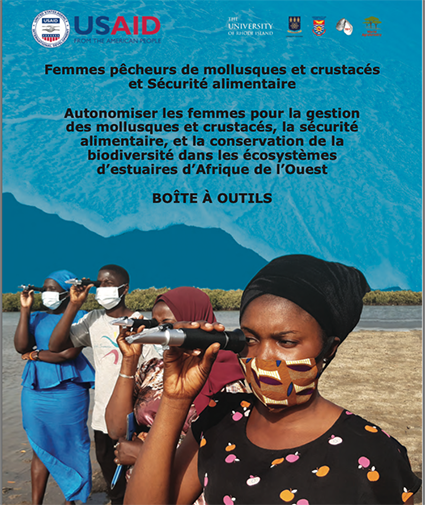
Empowering Women for Shellfish Management, Food Security and Biodiversity Conservation in Estuarine Ecosystems of West Africa [FRENCH]
This toolkit responds to an urgent need to facilitate locally driven and locally based livelihoods that enhance rather than degrade natural resources management, benefit women, and engage them in decision making. Coastal estuarine and mangrove areas of West Africa are endowed with a rich biodiversity that serves various ecosystem functions. These include climate change adaptation and mitigation, as well as food security, via the harvest of many estuarine species. Shellfish species comprise a significant portion of the food resources harvested from these ecosystems. As a result, the livelihoods of many coastal inhabitants, particularly women, are closely associated with these systems. Bivalve shellfisheries, primarily cockles and oysters, are the most important to women in West Africa. These livelihoods largely fall within the small-scale fisheries sector, but often go unnoticed in official fisheries statistics, both in volume and value of these harvests. The USAID Women Shellfishers and Food Security project has provided, for the first time, a regional perspective of estuarine and mangrove ecosystem-based shellfisheries in a report titled, “The Estuarine and Mangrove Ecosystem-Based Shellfisheries of West Africa: Spotlighting Women-Led Fisheries Livelihoods” (Chuku, et. al., 2021).
on Jun 2022
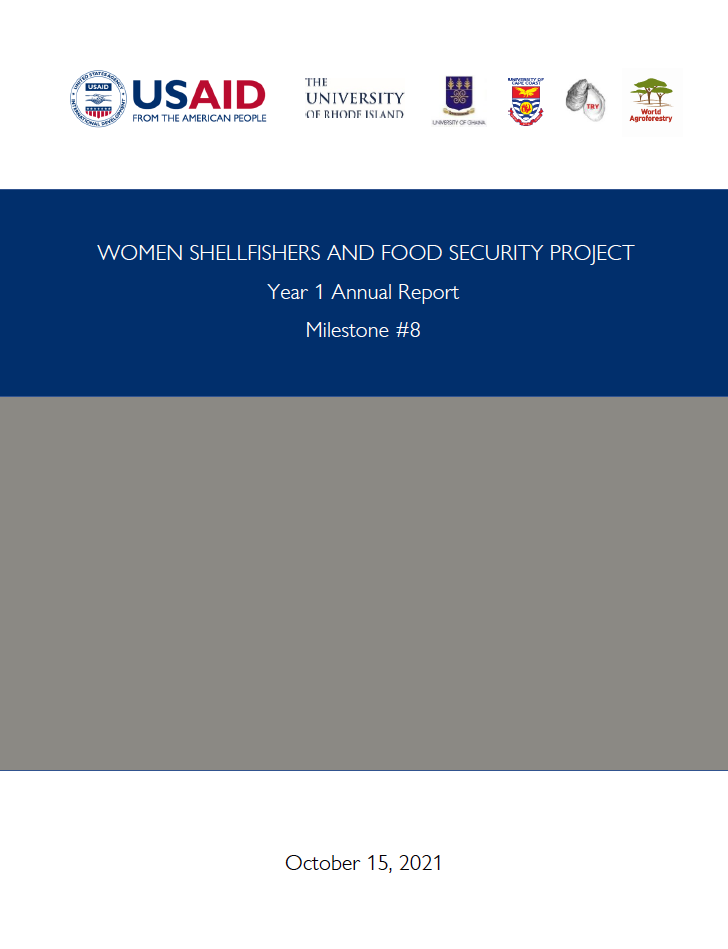
2021 Annual Report: Women Shellfishers and Food Security Project
This report documents progress on project implementation at the end of Year 1, September 15, 2020 – September 14, 2021, of this two-year project (Phase I of the Women Shellfishers and Food Security Project).
on Oct 2021
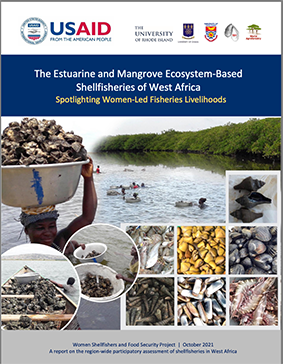
The Estuarine and Mangrove Ecosystem-Based Shellfisheries of West Africa: Spotlighting Women-Led Fisheries Livelihoods
on Jan 2021
